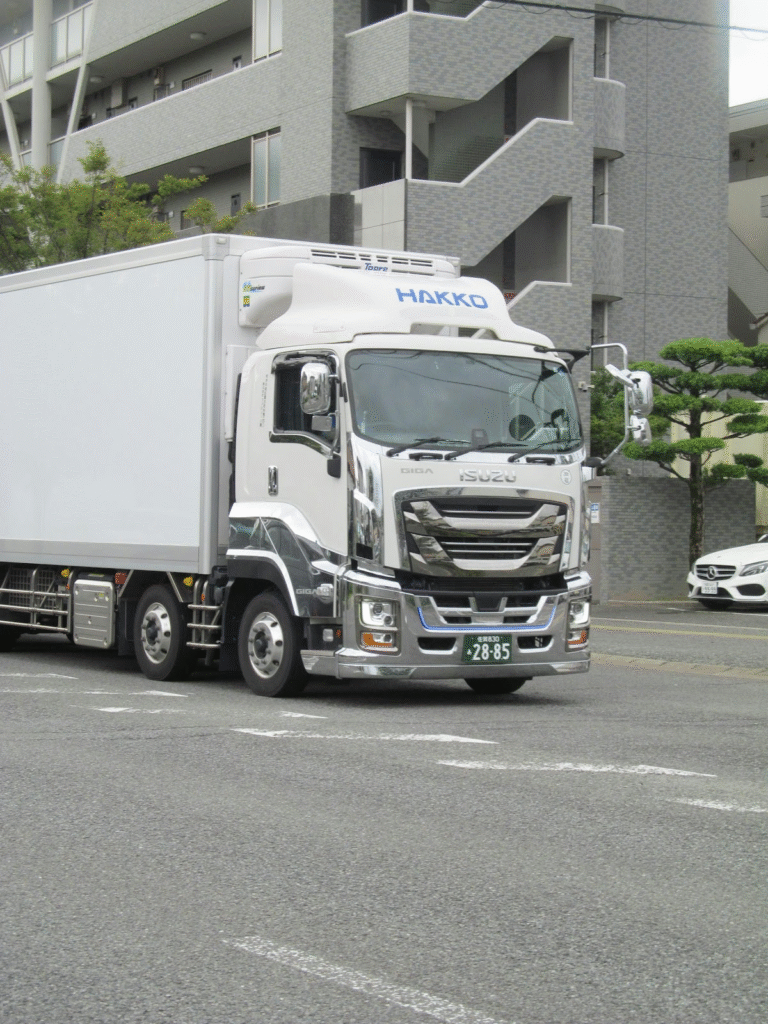
Digital Transformation in Recruitment: Embracing the Future of Hiring
Recruitment has ushered in a new age. From finding the right people to onboarding, technological advancements are altering the approach of teams in hiring, measuring, and retaining workers. They do this faster, more impartially, and in bulk. Digital transformation in recruitment, in practical terms, signifies the hiring lifecycle redesign with the employment of data, automation, and human-centered design. This allows recruiters to effectively cut the time spent on administrative activities and increase the time they have for relationship-building. HR digitalization is the most-handy way of dealing with the recruitment procedures, which, apart from the standardizing processes, leads to the recruitment efficiency increase, and the candidate experiences improvement at every touchpoint.Together, these shifts are accelerating digital transformation in recruitment across organizations of all sizes.
Digital Transformation in the Staffing & Recruitment Industry
Transformative Technologies
Artificial Intelligence and Automation
Contemporary teams have adopted the idea of utilizing AI in recruitment to focus on work that has high impact yet is classified as low-value, enhancing quality in the process. Ten of the most common examples include automatic resume screening, automatic interview scheduling, and a smart nudge for the hiring manager.
AI-supported recruitment tools are the foremost to help separating profiles, inferring skills, and making suggestions about the next-best actions. Jointly, they are utilized with recruitment bots for FAQs and status updates which, in the end, allow recruiters to get more time for discussions and closing. Forefront teams are tackling bias through recruitment by monitoring models, keeping human oversight (augmented recruiting), and making clear the intent and limits of the model – ethical AI in hiring as integrative non-negotiable.
Teams increasingly deploy AI-powered hiring tools for resume screening automation and interview scheduling automation, pairing them with HR automation tools that reduce manual work. Layered skills mapping analytics and machine learning in recruitment help surface adjacent talent while guardrails for bias mitigation in hiring keep decisions fair.
Besides, automation will be prevalent in the scheduling of hiring inside the Applicant Tracking Systems (ATS) and connected recruitment software. These platforms manage requisition, routing, and approval, respectively, boost candidate relationship management and collaborate with skill assessment tests and other assessment tools to provide a continuous, evidence-based funnel.
Socialization and Online Media
The discovery sphere underwent reconfiguration by social media and online job portals making them the new nexus. Mccampaigns now combine the storytelling by employer with targeting, remarketing, and community engagement. Recruiters will be able to automatically nurture sequences with the candidate sourcing automation, produce for example video dynamic “meet the team” reels and point to career hubs. Strong brands harness social media to illustrate and estimate candidate journeys mapping their own way, thus presenting the message coherently from the first encounter till the final offer.Always combine social media recruiting with targeted campaigns on online job platforms, then use talent pipeline management to nurture prospects who are not ready to move today.
People Analytics and Al Analytics
The decision-making process is shifting from gut feeling to data-driven hiring. The same team builds dashboards that combine HR data analytics with recruiting KPIs like source quality, stage-to-stage conversion, and offer acceptance. Talent analytics platform is the links from ATS data that integrate HR performance analytics, workforce planning tools, and talent market insights to help in capacity forecasting and compensation strategy formulation. Agility in hiring is further achieved by the addition of predictive analytics such as likelihoods of acceptance and tools for skills mapping that guide future outreach. Simple candidate experience measures (time to first touch, response SLAs, NPS) enable to run in parallel hiring funnel optimization and recruitment process optimization consistently.Robust data driven hiring depends on trustworthy inputs, so align performance analytics HR with consent based data collection policies to protect candidates and ensure reliable insights.

The Gains of Digital Transformation
Streamlined Efficiency and Expediency
Automated booking, email templates, and routing functionalities eliminate manual administration causing it to be much faster to prepare an offer. The HR automation features inside the ATS control checks, request references, and demand structured feedback. Integrations with cloud recruitment solutions facilitate data across systems by maintaining synchronization, cutting manual work completely. The summation is: streamlining ops, quicker cycle times, and steadier delivery across locations.These are practical examples of automation in hiring that shorten cycle times from req to offer while supporting digital onboarding improvements that make day one smoother.
Augmented Candidate Experience
Technology should not only be a feeling of hospitality, but also, inconspicuous bureaucracy. Conversational chat, transparent status updates, and self-service booking create frictionless operation. Automated candidate journeys, informed by candidate journey mapping and candidate relationship management are instrumental in keeping the talent warm even if the timing is not yet right. The digital onboarding program is ramping and the problems with digital onboarding (paperless forms, paths of learning, buddies) are early engagement in changing.
Better Decision-Making
With consistent tagging and governance of recruiting data, managers will be able to compare similar jobs, analyze the channels, and decide on the budget with confidence. The use of talent analytics and predictive analytics in hiring is indicative of the fact that the sources are durable, while tools for the planning of workforce headcount scenarios preload the pressure. The decision-makers are also looking at pay transparency in hiring which is the consequence of funnel performance and equity outcomes so they will create policies based on evidence not on stories.
Problems associated with Digital Transformation and Things to consider
Data Privacy and Security
More knowledge necessitates more authority. Corporations should carry out data privacy in recruitment by blocking sensitive fields, documenting consent-based data collection, and parallelly maintaining a robust HR data security. Encryption, access controls, audit logs, and vendor diligence are minimized stakes. Policies that are recruitment data governance standards should be interpreted regionally (i.e., retention limits) by the entire stack.
Resisting Change
Only with people technology produces the best outcomes of transformation. Expect misunderstanding about automation and new workflows. The idea of good human resource change management mixes with role-based training, clear success metrics, and coaching hiring managers. Quick wins should be recognized in order to speed up the HR technology adoption process and the overall automation adoption. Always keep “human in the loop” to show the teams that the technology adds to their judgment rather than replaces it.Track emerging HR technology trends and invest in change management in HR to overcome inevitable recruitment challenges as tools and workflows evolve.
Embracing Existing Systems
A clean point solution that doesn’t talk to anything is a nuisance. The foundation of HR tech interoperability is the ease of access. Clean APIs, webhooks, and native connectors are great tools to tie ATS, CRM, background checks, assessments, and HRIS nicely together. The cardinal goal is a shared and indisputable truth at the hands of a reliable record, over the lifetime of the hiring, and employee, powered by manageable cloud recruitment solutions.

The Trends ahead in Recruitment
Remote and Global Workforces
The map of talent has rapidly become borderless. Remote hiring is a gateway for companies to support sectors like follow-the-sun model and rapidly diversify skills. Mature businesses craft repeatable playbooks for global talent acquisition – through the standardization of interview rubrics, salary bands, and compliance – so each regional office can deliver a consistent experience every time. The strong talent pipeline is built through market management which reduces time-to-shortlist and also creates a stock of silver-medalist candidates for future jobs.
Advancements in AI and Machine Learning
The constant learning and growth in machine learning will be evident in the employment process, we will improve,machine learning entity resolution and skills inference from portfolios, as well as high-fidelity recommendations for adjacent roles are the most important ones. The new AI-based recruitment tools of hiring will be wrapped up in a pack of sources with logic-based decision-making and tools for tasks adjoining candidates to more complex issues. The push for ethical AI in hiring will be rather crucial as organizations will have to tighten the screws on model documentation, bias monitoring, and transparency. Throughout this journey, recruitment teams will see their digital transformation go up a notch, with precision matching and scalability becoming a reality.

Enduring Education and Progression
To be ahead, trustees will need to build recruitment as a product with principles of measurement, iteration, and improvement. Get into the rhythm of constant recruitment innovation: monthly funnel reviews, quarterly playbook updates, and annual tech audits against the backdrop of evolving HR tech trends. Upskill recruiters on analytics, storytelling, and negotiation, train hiring managers to use candidate assessment tools and structured interviews, and keep a backlog of experiments for online hiring optimization.

Wrap Up
Modern sourcing combines technology and human interaction. Digital recruitment trends such as candidate sourcing automation, digital onboarding, video interviewing newly introduced to the market analytics platforms and digital onboarding have been embraced by organizations thus they have facilitated speed and quality, and made the process more humane. It is measurable: stripping the recruitment process is tighter, and filling the pipelines is a stronger process because of the good hires that result in stretching.
For this purpose, rely upon three principles that will guide you:
- Put people first, then automate. Document how recruiters and candidates do their journey, make use of automation where it removes toil and improves clarity.
- What matters should be measured. Create your only source of truth, make a list of the candidate experience metrics, and apply data analytics in HR to lead your investments.
- Responsible Integration. Protect privacy, document consent, and ensure systems interoperate cleanly — your foundation for scalable, compliant growth.
Sustained investment in tools, skills, and governance will ensure digital transformation in recruitment creates faster, fairer, and more human hiring.
Those who internalize these principles will continue to see digital transformation in recruitment as more and more a reality, it will not be a one-off project but a longstanding competency. Through the right talent acquisition strategies, interoperable platforms, and a culture of learning, you will use the technology for hiring fairly, fast, and confidently regardless of the prevailing market.All of this positions teams for the future of recruitment, where human judgment is amplified — not replaced — by responsible technology.
